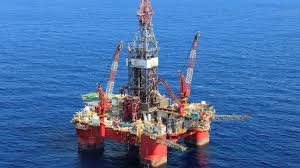Rising oil prices catch emerging economies at a vulnerable moment

OIL prices have a knack of jumping at the most inconvenient times. As in 2007, for instance, when the price of a barrel soared into triple digits, destabilising a world economy already heading for a financial crisis. Or, for that matter, now. At more than $ 80 per barrel, Brent crude is nearly twice as costly as in the summer of 2017 and three times as pricey as in early 2016 (see chart, left panel). Dear oil does not yet mean a crisis. But it is putting emerging markets, already labouring, under further stress.
That oil should once again be causing trouble is a bit of a surprise. Half a decade ago prices in excess of $ 100 per barrel seemed to be a permanent feature of the economic landscape. But in 2014 prices crashed, as America’s shale boom turned the market on its head. The world quickly embraced the idea of a “new normal” for oil: in which large-scale, flexible shale production in America promised to keep prices stable and moderate. Americans scarcely had an opportunity to swap their Priuses for gas-guzzling SUVs before the market turned again.
Not all oil shocks are the same. When robust global growth boosts the demand for oil and pushes up prices, the effect on the world economy is largely benign. In such cases, the rising cost of oil to countries that must import it is offset, to some degree, by increased demand for their exports. In contrast, a jump in prices resulting from an interruption to supply is more unsettling. Rising prices in the mid-2000s were clearly a result of soaring demand. Most economies weathered rising costs tolerably well until prices climbed vertiginously in 2007. But the cause of today’s run-up is murkier. Demand growth is a factor. Oil consumption in advanced economies recovered as post-crisis doldrums receded and as lower prices reduced the incentive to conserve. But global growth is poised to slow in 2019, according to new forecasts by the OECD. Growth in China, which added most to oil demand in the 2000s, is ebbing and becoming less energy-intensive.
Meanwhile, supply constraints loom larger (see chart, right panel). Economic and political crises have sapped Venezuela’s productive capacity. Prices are rising in anticipation of tighter American sanctions on Iran, scheduled to take effect in November. At a recent meeting members of OPEC, joined by other leading oil exporters such as Russia, chose not to respond to higher prices by increasing supply. And importantly, inventories have been falling. Markets will have very little cushion against further price increases should any new supply disruption occur.
In the past, soaring oil prices could threaten the global economy by squeezing household budgets and depressing spending in petrol-thirsty countries like America. In a paper examining the spike of 2007-08, James Hamilton, an economist, concluded that dear oil was responsible for driving America into recession in late 2007. But America’s place in oil markets has changed as a result of the shale revolution. The price collapse of 2014 might have been expected to deliver a substantial stimulus to the American economy, wrote Christiane Baumeister and Lutz Kilian in a paper published in 2016. Yet the blow that lower prices dealt to America’s petroleum industry offset the benefits of cheap oil to consumers, resulting in a wash for the economy as a whole. Similarly, rising prices now irk consumers but provide relief to the oil industry.
Other economies are less hedged, however. The big emerging markets most at risk account for a far larger share of global GDP than in the past. For the oil-importing economies of the emerging world, both the nature and the timing of the present run-up in prices are worrying.
When oil prices rise, oil-importing economies’ terms of trade deteriorate: the price of their imports rises relative to that of their exports. Because their exports pay for fewer imports, the importers’ current-account deficits widen. During a more propitious moment, this would not be cause for great concern. The importers’ exchange rates would depreciate, facilitating an adjustment: they would buy a bit less from the rest of the world than before, and sell the rest of the world a bit more. Whatever current-account deficits remained would be easy enough to finance, given bullish investors’ eagerness to lend to the fast-growing emerging world.
That’s oil, folks
This is not that sort of moment. Growth in world trade is slowing. Manufacturing export orders flipped from growth to contraction over the summer. As trade growth slows, the adjustment that oil importers must make to higher oil prices becomes more severe. India’s current-account deficit continues to swell, for instance, even as the rupee plumbs record lows against the dollar. Falling currencies exacerbate the burden of dollar-denominated debt. In recent years, companies in emerging economies embarked on a dollar borrowing spree, lured by low interest rates. For companies that earn in their domestic currencies but owe in dollars, the depreciations which ease the adjustment to dearer oil prices mean a financial squeeze. Indebted corporate borrowers may curtail investment and hiring, or even default. One economic drag reinforces another.
Unluckily, oil prices are rising just as global financial conditions are also becoming less forgiving. Rich-world central banks, on high alert for signs of accelerating inflation, are moving towards a tighter monetary stance. When America’s Federal Reserve raised its benchmark interest rate by another 25 basis points, to 2-2.25%, on September 26th, it reiterated that further rises were on the way. Rising rates in America act as a magnet for global capital, buoying the dollar and sponging up money which previously sought out high returns in emerging markets.
In the early 2010s the Fed stayed doveish despite high oil prices, recognising that high unemployment would keep inflation in check. With joblessness now below 4%, the hawks are poised. Higher energy prices may well mean faster interest-rate increases and more pressure still on the current accounts of beleaguered emerging economies. Dearer oil is more an ill-mannered guest than a harbinger of doom. But its arrival is nonetheless impressively ill-timed.
This article appeared in the Finance and economics section of the print edition under the headline “Crude awakening”






